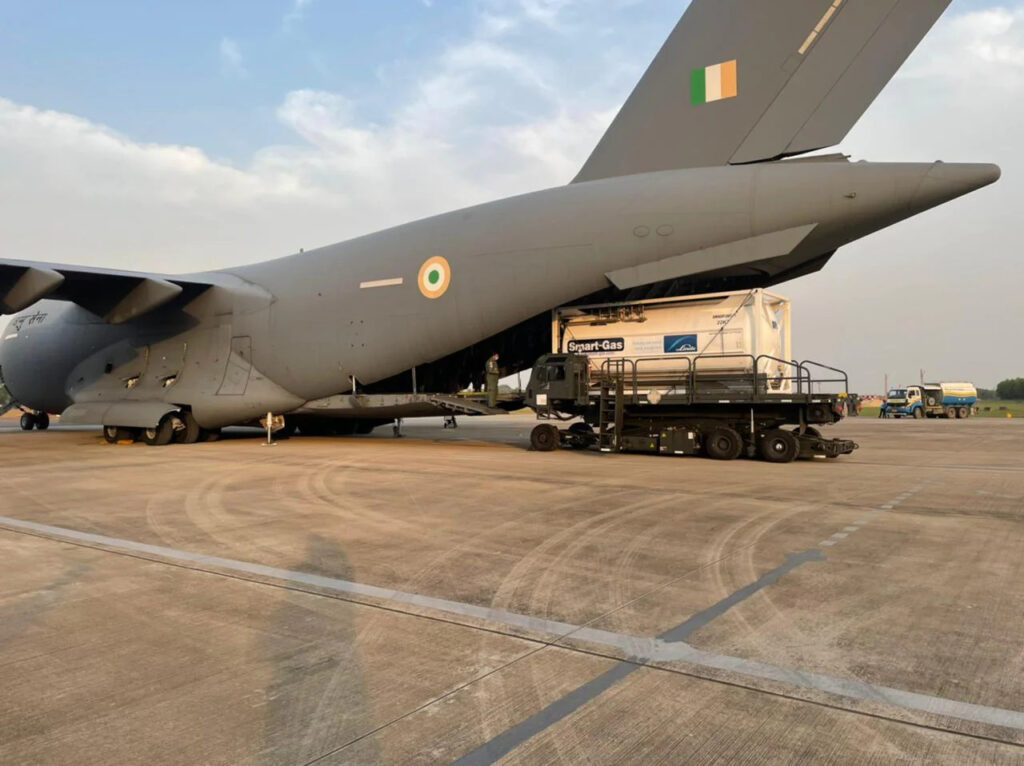
India’s mission gets a boost from a wide range of partners. With the second wave of the pandemic leaving afflicted Indians breathless, Singapore began with a three-sentence text message between external affairs minister S Jaishankar and foreign minister Vivian Balakrishnan on April 22.
The same day in Paris, Defence Minister Rajnath Singh summoned Indian Air Force (IAF) Chief Rakesh Kumar Singh Bhadauria, who was on a five-day official visit to France at the time. Putting everything else aside, Air Chief Bhadauria worked through the night to plan transport plane movement both externally and internally. As ‘Mission Oxygen’ began in earnest with a C-17 picking up four cryogenic containers from Changi in Singapore and arriving at the transport hub of Panagarh in West Bengal, the entire IAF transport fleet was placed on standby 24 hours a day, seven days a week with multiple sets of pilots.
To get to their destinations, the cryogenic tanks picked up oxygen from several steel plants along the way and hitched on to Railway flat waggons. While large-scale industrial units in eastern India produce large amounts of oxygen, there was a global shortage of specialised cryogenic tanks for transporting liquid oxygen. Singapore, India’s trusted and proven ally, stepped in at a critical time to help by acting as a logistics hub for critical medical items that India needed to import from abroad. P Kumaran, the Indian High Commissioner to Singapore, did his part by taking the initiative early on to identify good sources for key medical items in the city-state.
On April 29, defence minister Rajnath Singh met with his Singaporean counterpart Ng Eng Hen to discuss strengthening capacities to combat the second wave of the virus that had struck India. Two days later, Jaishankar spoke with his Singaporean counterpart again, with the latter eager to assist India. Balakrishnan recalled how India had stood by Singapore during the first wave of the tsunami in 2021, promising full support by informing all other ministries in the city-state about India’s national health emergency. In 2021, India provided critical items to Singapore, including hydroxy-chloroquinine, surgical masks, hand sanitizers, and polypropylene material.
Singapore sent two of its own Air Force planes carrying oxygen cylinders and other supplies on April 28 as a special gesture. Separately, the Temasek Foundation in Singapore donated over 8000 oxygen concentrators, 51000 oxymeters, over 900 BiPAP machines, and 27 ventilators in collaboration with a number of Singaporean companies.
The most encouraging aspect is that High Commissioner Kumaran has been able to mobilise the large Indian community in Singapore, particularly IIT, IIM, and TiE alumni, as well as organisations such as the Singapore Indian Chamber of Commerce and Industry and the Little India Shop Owners Association, to help raise funds and facilitate logistics.
Singapore has proven to be a critical lifeline to India in times of medical crisis, despite having a population the size of a Delhi suburb, thanks to active bilateral engagement.








